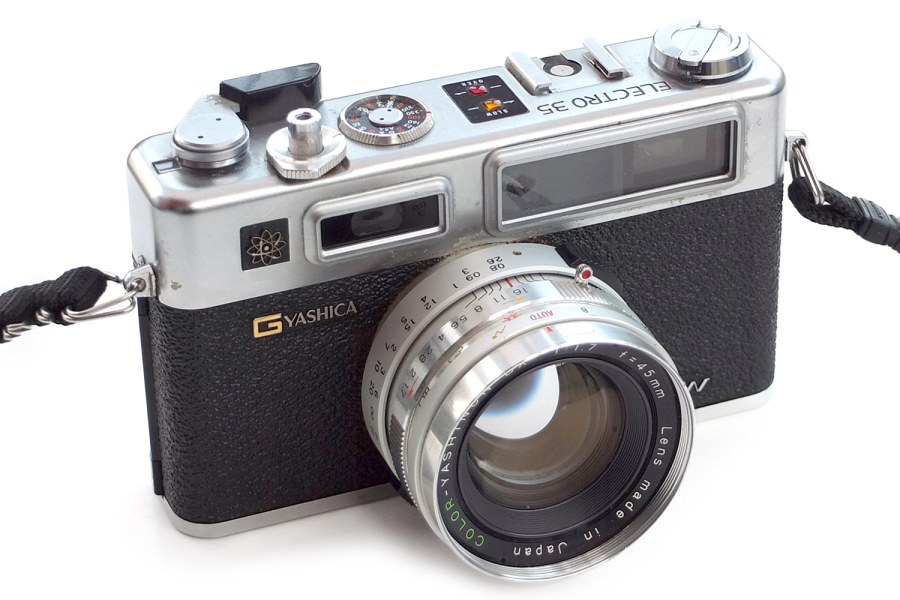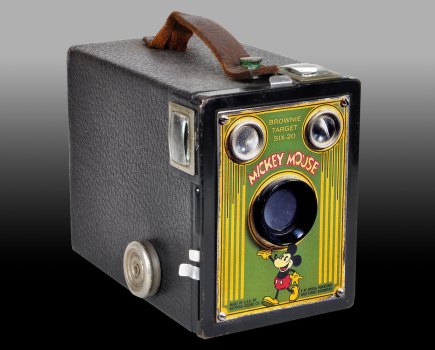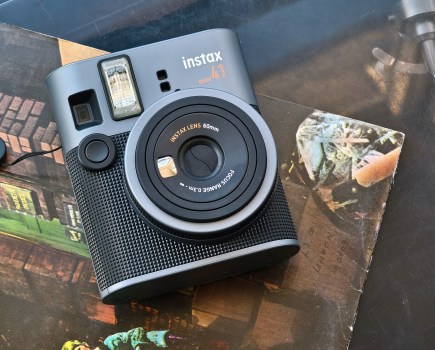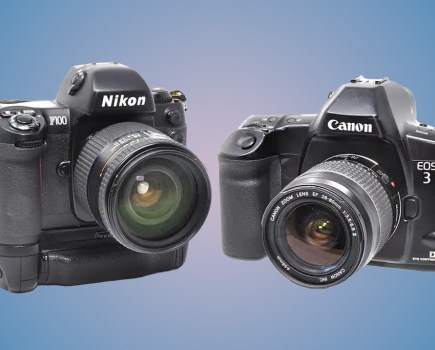The Yashica Electro 35 GSN is one of several rangefinder cameras that have had the epithet “The Poor Man’s Leica” bestowed upon them. As with various other cameras, they have been through a bit of a cult phase, with prices peaking and then receding. At their height, in the early 2010s, they would command upwards of $250/£200, but now you can easily find one for around $70/£60 on eBay. I bought mine second-hand from a camera shop in the early 1990s, well before my quest to use as many cameras as possible started, and simply because I liked the look of it and planned to use it.
Of course the Leica comparison is grossly overblown hype, and aside from a superficial visual similarity to the M series Leicas, there is nothing else in common. Granted there is a built in coupled rangefinder, but the lens is not interchangeable, and the exposure is automatic.
The Electro 35 was introduced in 1966, and this variant, the 35 GSN, was launched in 1973. Mine has a chrome finish, but there are also black versions.
As is the way with fashions, at times the black has fetched higher prices than the chrome, and vice versa. Design-wise it’s very much of its era, quite chunky and square in appearance, and now probably quite appealing to retro fans. The most prominent feature is the impressive looking 45mm f/1.7 lens, which consists of six elements in four groups.
There are only three exposure modes.
Most of the time you use “A” for automatic, but there is a “B” setting for long exposures, and a flash setting, at which the shutter speed is fixed at 1/30th sec and the aperture can be set manually according to the distance of the flash from the subject. The auto mode is aperture priority, so you choose the aperture and the camera decides on the shutter speed, which ranges from 1/500th sec to an impressive 30 seconds. There is no indication from the camera as to what speed has been chosen, but there are two warning lights on the top of the body, which are repeated in the viewfinder. A red light indicates that there is too much light for the chosen aperture and so you need to stop down, while the yellow light tells you that the shutter speed will be longer than 1/30th, so a tripod or other support will be needed.
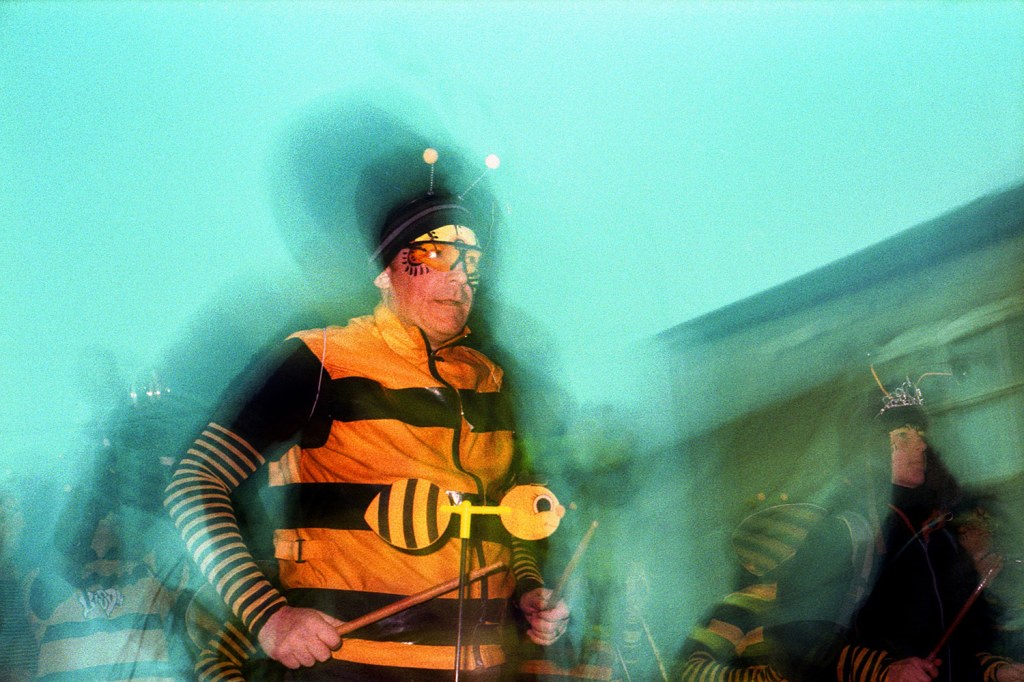
I’m a big fan of the Sheffield Samba Band, and I took the 35 GSN with me to a local lantern parade where they were performing. I left the camera on the automatic setting, but also used a flashgun with coloured gels taped over it. The aperture was set to f/11, so as the daylight faded, the shutter speed got slower and slower, running up to several seconds by the time it was dark. The result is that there is a well-defined sharp image caught by the flash, with a blurred long-exposure image superimposed.
Related reading:

